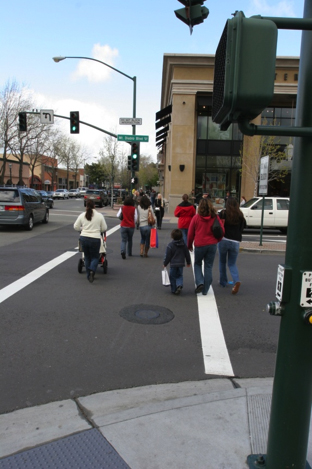
Traffic signals create gaps in the traffic flow and allow pedestrians to cross the street at locations where pedestrians would otherwise experience excessive delay, difficulties crossing the street, or safety issues.
Source: pedbikeimages.com - Dan Burden (2006)